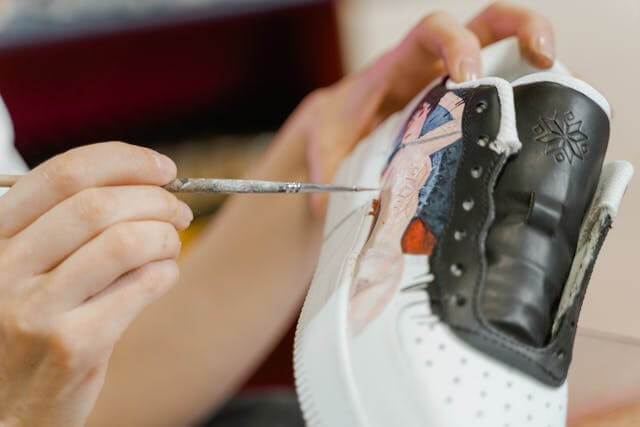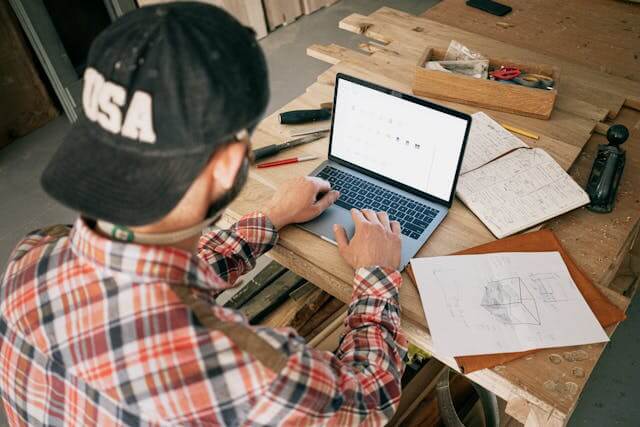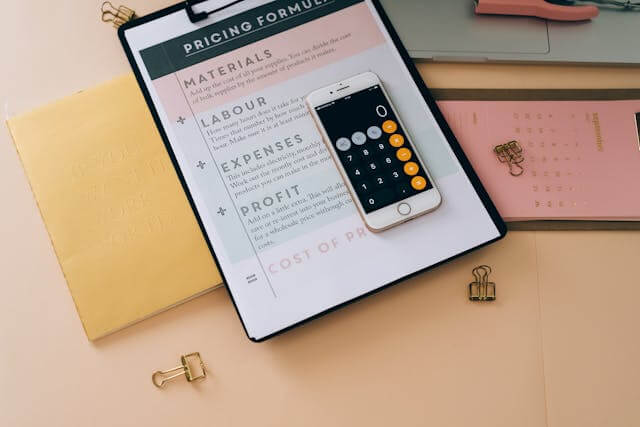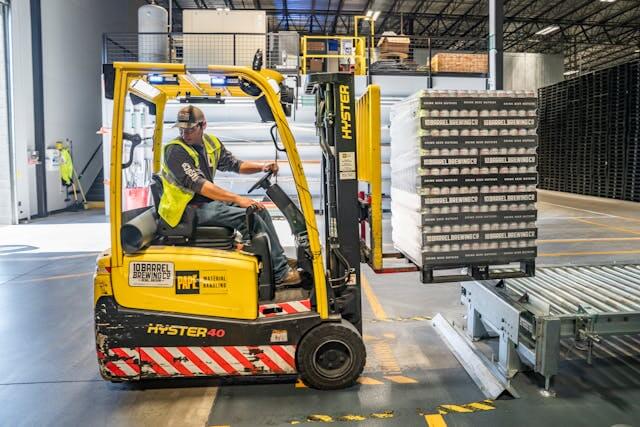It is a great achievement to come up with a new product idea. More so if it can solve a particular problem for consumers in your target market that other brands have not addressed.
However, if you are not a manufacturer, you might be wondering how to move forward with your idea. Is the concept truly viable? If so, how do you get it manufactured? Do you require any legal documentation or licenses?
So, in this detailed guide, we discuss each step on how to get a product manufactured and share tips on how to navigate the process.
Come along, will you?
10 Simple Steps to Get a Product Manufactured
Step 1: Refine Your Product Concept

Before moving forward with manufacturing, take the time to refine your product idea. This involves ironing out the details to ensure your product is both practical and marketable. Here’s how to go about it:
- Design: Focus on a design that balances aesthetics and functionality. Sketch out the product with accurate dimensions, and decide on color schemes, decorative elements, and other visual features. For example, if you’re designing sneakers, the design should enhance comfort and appeal to your target audience.
- Materials: Choose materials that align with your product’s purpose. For sneakers, you’d want materials that are durable, lightweight, and comfortable, while also supporting the design vision.
- Ingredients (if applicable): For products that involve substances—like cosmetics or pet products—ensure all ingredients are safe and compliant with safety standards.
- Functionality: Consider how your product will work in real-life scenarios. For instance, if you’re adding extra cushioning to sneakers for comfort, ensure it doesn’t make them too heavy or compromise breathability.
- Industry Regulations: Research and adhere to relevant industry guidelines. Non-compliance could result in rejection or fines, so it’s crucial to meet all standards before manufacturing.
Consider a Prototype
If you’re unsure about any aspect of your product, developing a prototype is a great way to bring your concept to life.
A prototype lets you test the product’s design, materials, and functionality, and provides the opportunity to make adjustments before committing to full-scale production.
Taking the time to refine your concept ensures you’re set up for success, both in manufacturing and in the market.
Step 2: Conduct Market Research

Before diving into manufacturing, it’s essential to evaluate the market for your product. The ultimate goal is to sell your product profitably, so market research helps you determine its potential success. Here’s what you need to focus on:
- Competition: Look for similar products already in the market. Identify your competitors’ strengths and weaknesses, and assess how your product stands out. Does it offer unique benefits or solve a problem better than existing alternatives?
- Demand: Understand the needs and purchasing habits of your target market. Are people actively searching for a solution your product offers? Can they afford your product? Gauge the size of your potential audience to determine its sales potential.
- Profitability: Compare your estimated manufacturing costs with the average price of similar products. Will your selling price allow for a healthy profit margin after covering production and marketing costs?
You can conduct market research through online platforms or using data from regulatory authorities in your industry. Try and broaden your research to an international scale as well to avoid any surprises.
Step 3: Patent Protection
Patent protection is a critical step to safeguard your product idea from being copied or exploited by competitors.
It gives you exclusive rights to manufacture, sell, or license your product, providing a significant competitive edge. Here’s how to approach this step effectively:
Why Patent Protection Matters
- Prevents Imitation: A patent ensures that others cannot legally replicate your product’s design, functionality, or unique features.
- Establishes Credibility: Patented products often signal innovation and reliability, building trust with consumers and investors.
- Protects Investment: If you’ve invested significant time and money in developing your product, a patent shields that investment from potential infringement.
How to Secure Patent Protection
The process generally involves ensuring your product is eligible for a patent by meeting requirements like novelty (it hasn’t been done before), utility (it serves a purpose), and originality (it’s not an obvious improvement).
A thorough patent search helps confirm there are no existing patents that your product might infringe on.
You’ll then need to file a patent application, which can range from a provisional application (temporary protection while you refine your product) to a full patent application. For products with global potential, international patent systems like the Patent Cooperation Treaty (PCT) can help protect your idea across multiple markets.
While the process can seem complex, consulting with a patent attorney simplifies it and ensures your intellectual property is fully secured. Investing in patent protection early provides peace of mind and long-term security for your product’s success.
Step 4: Determine Manufacturing Needs

Before diving into production, it’s essential to clearly outline your manufacturing needs. This step prepares you to effectively communicate with manufacturers and avoid costly missteps during the process.
Here are the key factors to consider:
1. Product Specifications
Define every detail about your product, including dimensions, materials, colors, functionality, and any special features. Create a technical drawing or CAD file if applicable, as this will help manufacturers understand your vision.
2. Production Volume
Estimate how many units you need for your first production run. This helps determine the scale of manufacturing required and ensures you meet minimum order quantities (MOQ) set by manufacturers.
3. Budget
Establish a budget that includes production costs, shipping, packaging, and potential overheads. Knowing your budget allows you to choose the right manufacturer without overextending your resources.
4. Customization and Branding
If your product requires custom molds, unique branding elements like logos, or specialized packaging, make a list of these requirements. Be clear about the level of customization you need so you can choose a manufacturer equipped to handle it.
5. Timeline
Set realistic timelines for production, from sample creation to mass manufacturing. Share these deadlines with your potential manufacturers to ensure they can meet your expectations.
By having a detailed understanding of your manufacturing needs, you’ll be in a stronger position to find a manufacturer that aligns with your goals and delivers high-quality results.
Step 5: Find Potential Manufacturers

Finding the right manufacturer is a key step in turning your product idea into reality. You can approach this in two primary ways: conducting your own search or hiring a sourcing company. Here’s how each method works:
Online Research
The simplest way to find manufacturers is by simply searching online. All you need is the right keyword and an online search engine like Google.
Remember to try and define your search. For instance, if you would like to find a manufacturer in China, your keyword could be: ‘custom shoe manufacturer China’. You could switch around the wording too just to get a more diverse bunch of results.
Once you get the search results, peruse each manufacturer’s website and see what they have to offer. Check out other customers’ reviews too if they are listed on any online platforms.
Speaking of platforms, you could also find lots of manufacturer recommendations on social media groups related to your industry, independent industry-based forums, or online marketplaces like Alibaba or 1688.
Sites like Quora and Reddit could equally be helpful although you would have to sort through lots of dialogue. The reviews there are also quite blunt but informative, nonetheless.
A Sourcing Company
A sourcing company comprises professional agents that have an in-depth understanding of the manufacturing sector in their country. They know or have the networks to connect you with manufacturers that can implement your product idea.
The advantage here is that you do not have to go through the ups and downs of finding a product manufacturing company. The sourcing company does all of that for you and only brings you a list of top options to choose from.
A top-shelf sourcing company could also:
- Seek a quote on your behalf
- Negotiate better rates and MOQ terms for you
- Oversee product development processes under your instruction
- Perform quality inspections
Sourcing companies charge a fee for their services and most firms allow you to choose the scope of services you would require. It is thus advisable to set aside a budget for their services based on what you would like to delegate.
Step 6: Choose the Right Manufacturer
After identifying potential manufacturers, your next task is to evaluate and choose the right one.
This is a critical step, as the manufacturer you select will directly impact the quality, cost, and success of your product. Start by evaluating the following key factors:
- Production Capabilities – Ensure the manufacturer can handle your specific product requirements, including complex designs, materials, and customization needs. Ask if they can scale production as your business grows.
- Experience and Expertise – Look for manufacturers with experience in producing products similar to yours. Ask for their portfolio or case studies to evaluate their past work and success in your industry.
- Quality Standards – Inquire about their quality control processes and certifications, such as ISO 9001 or industry-specific standards.
Request samples to inspect product quality firsthand before committing. - Communication and Responsiveness – A good manufacturer should be easy to communicate with and respond promptly to inquiries. This is essential for maintaining a smooth working relationship, especially when making adjustments during production.
- Cost and MOQ – Review the manufacturer’s pricing and MOQs. Make sure they offer a price point that fits your budget without sacrificing quality. Be cautious of manufacturers that offer extremely low prices—this could be a red flag for poor quality.
- Location and Shipping – Consider the manufacturer’s location relative to your target market. Proximity can reduce shipping costs and lead times. Factor in shipping costs, import duties, and timelines when evaluating the total cost.
How to Vet Manufacturers
- Ask for References: Request contact information for past clients and ask about their experiences. A reliable manufacturer should be able to provide this without hesitation.
- Factory Visit (if possible): If feasible, visiting the factory in person offers insight into their facilities, operations, and production quality. It also helps assess their professionalism and capacity.
- Review Certifications: Verify that the manufacturer holds relevant industry certifications, such as quality management or environmental standards.
Negotiating Terms with Manufacturers
Once you’ve selected a manufacturer, it’s time to negotiate the terms of your agreement. Key points to cover include:
- Ensure you have a clear understanding of their pricing structure.
- Agree on production timelines and delivery expectations.
- Set clear payment schedules and conditions.
- Discuss how any issues or defects will be handled during production.
Step 7: Request Samples

Once you’ve narrowed down your list of potential manufacturers, requesting samples is a crucial step before moving forward with a full production order.
Samples give you the chance to evaluate the quality, functionality, and design of your product to ensure it meets your standards.
Requesting a sample allows you to check the overall quality, materials, and craftsmanship, as well as test any customizations or features you’ve asked for.
It’s also an opportunity to identify any potential issues, such as design flaws or defects, before committing to a full production run.
When requesting a sample, be clear about the product specifications and any custom features you want.
Be prepared for manufacturers to charge a fee, which may be refunded if you place a larger order.
Make sure that each manufacturer signs an NDA before you share your design or product concept with them. This way, they would be legally bound not to use or replicate your design whether you pick them or not.
Once you receive the sample, take time to evaluate it. Check the quality, functionality, and aesthetics to ensure it aligns with your brand vision.
If the sample meets your expectations, you can move on to the next step. If not, don’t hesitate to request adjustments or explore other manufacturers.
Step 8: Agree on Terms and Pricing

Once you select a manufacturer to work with, it’s time to solidify the terms of your partnership. Standard practice typically requires that you sign a contract outlining details, including but not limited to:
- Actual cost per item: Whereas before you may have only discussed estimated costs, at this point, you should specify the exact amounts, especially since you’ve already evaluated the sample and agreed on all design features.
- Supply terms: Agree on the number of units you are likely to order, when they should be delivered, the method of payment, and the payment schedule.
- Shipping and delivery: If you’re working with an overseas manufacturer, ensure they disclose their shipping policy and the costs you are likely to incur. You can agree to them if they suit your needs, but if not, you could arrange for alternative shipping.
Aside from the main contract, ensure that both you and the manufacturer sign a Nondisclosure Agreement (NDA) or a Nondisclosure, Non-circumvention, and Non-use (NNN) agreement if you are manufacturing in China.
It is recommendable that you seek the advice of professional counsel in evaluating such contracts so that you do not miss out on or misunderstand any important clauses that could work against you.
Step 9: Manufacturing

With all your documentation in place, you’re ready to proceed with your first manufacturing order.
Since it’s your first order, it’s a good idea to check in with your manufacturer from time to time to ensure there are no challenges or delays.
If you have a sourcing agent, they can handle this task on your behalf while you focus on other aspects, such as marketing the product.
Once the order is complete, you can request quality assurance through video, make a personal visit to the factory, or ask your sourcing agent to oversee the quality inspection before packing.
If everything is in order, you can approve the order for dispatch.
Step 10: Quality Control and Shipping

After all the hard work and preparation, it’s time to ensure that your products are ready for the market. Quality control and shipping are crucial steps to finalize your product’s journey from concept to customer.
Quality Control: Before shipment, it’s important to thoroughly inspect the final batch. Depending on your preference, you can conduct the inspection yourself, hire a third-party inspection service, or enlist the help of your sourcing agent.
Ensure that the products meet the specifications you’ve agreed upon, paying close attention to details such as design, materials, functionality, and packaging.
Shipping: Once your products pass the quality inspection, you’ll need to arrange for shipping. If you’re working with international manufacturers, this means coordinating with freight forwarders to handle the shipping logistics.
It’s essential to understand the shipping costs, delivery timeframes, and customs procedures. If needed, discuss packaging methods to prevent damage during transport.
Final Check: When the products arrive, conduct one last inspection to confirm that everything is in perfect condition. Once you’ve confirmed the quality, you’re ready to sell and distribute your product.
Tips on How to Get a Product Manufactured in China
Sourcing products from China can be an excellent choice for businesses looking to keep costs down. But the process can feel tricky at first. Here are five practical and friendly tips to help you get started:
1. Know Which Region Specializes in What

Different parts of China are known for making different types of products. For example, Guangdong is great for electronics, Zhejiang is known for textiles, and Shandong specializes in machinery.
By understanding which region makes what, you can find the right area to search for manufacturers. For more on this, check out our guide on China Manufacturing Cities.
2. Use the Right Sourcing Platforms
To find manufacturers in China, platforms like Alibaba, Made-in-China, and Global Sources are super helpful.
Start with specific searches like “custom [your product] manufacturer in China” to make sure you’re getting the right results.
You can also check out 1688.com, a Chinese platform that can be a little more affordable.
But in order to directly contact Chinese manufacturers you will need to use Google translator as most don’t speak English.
3. Consider a Sourcing Agent

If finding a good manufacturer is overwhelming, a sourcing company can help!
These professionals know the ins and outs of Chinese manufacturing, from finding suppliers to negotiating prices.
They can even handle quality checks for you, saving you time and reducing risk.
FAQs on How to Get Your Product Manufactured
In Conclusion
It is almost impossible to believe that you can get a product manufactured in just the 10 steps outlined in this guide. Does that mean that it is simple and easy? Of course not. It will take time and effort.
The main takeaway here is that the process is not impossible and neither does it require any complex or technical skills. You can begin the journey to getting your product manufactured whether you are a small business owner or a big brand looking to grow.
Better still, you can just as easily delegate the entire process to us at AsianDavinci. We are a full-service sourcing company that handles everything from finding the right manufacturer to product development, branding, global shipping, and lots more.
Wondering how to partner with us? We have made it quick and easy. Send us a brief description of the type of product you need to be made and request a free quote at any time.
